Let’s be honest: most B2B LinkedIn strategies are stuck in 2018.
While everyone else is still mindlessly sharing company press releases and stock image quote cards, leading CMOs have dramatically shifted their approach. They’re leveraging LinkedIn not just as a promotional channel, but as a strategic business asset that delivers measurable pipeline impact.
The numbers tell the story: according to LinkedIn’s own data, only 1% of the platform’s 930+ million users create content regularly. Yet this tiny minority drives 98% of the engagement, conversations, and—crucially—business opportunities.
What separates the top performers from the digital wallpaper? It’s not luck, budget, or even company size. It’s a deliberate strategy that stands in stark contrast to conventional LinkedIn wisdom.
Let’s pull back the curtain on what’s actually working right now.
The “Deep Context” Hack: Beyond Generic Thought Leadership
The biggest mistake most B2B marketers make on LinkedIn is publishing one-size-fits-all content that could apply to literally any company in any industry.
According to Edelman’s latest B2B Thought Leadership Impact Study, a staggering 71% of decision-makers say less than half the content they consume provides valuable insights. Yet these same executives spend an average of 4.9 hours per week engaging with content they deem truly valuable.
Top-performing CMOs have cracked the code with what content strategist Ann Handley calls the “Deep Context” approach: creating content so specifically tailored to their target audience that it feels like a private conversation happening in public.
HubSpot CMO Kipp Bodnar exemplifies this approach brilliantly. Rather than sharing generic marketing advice, he focuses relentlessly on the specific challenges of scaling B2B SaaS businesses through inflection points—leveraging his unique experience growing HubSpot from startup to industry giant.
This laser-focused approach has helped him achieve an average engagement rate 17x higher than industry benchmarks, according to data from LinkedIn analytics platform Shield.
The strategy works because it triggers what psychologists call the “cocktail party effect”—our brain’s ability to suddenly tune in when we hear something directly relevant to our specific situation, even in a noisy environment.
Action step: Identify the three most specific challenges your exact target audience faces that your company has unique perspective on. Create a content calendar that addresses these challenges with specific stories, frameworks, and insights only you can provide.
The “Native Contrarian” Hack: Standing Out Without Being Obnoxious
In a sea of me-too content, agreement doesn’t capture attention—thoughtful disagreement does.
LinkedIn’s algorithm data confirms this: posts that spark meaningful discussion receive 53% more visibility than simply informational content. Yet most marketers remain terrified of saying anything that might conceivably offend anyone.
The most effective CMOs on LinkedIn have mastered what social media expert Mark Schaefer calls the “Native Contrarian” approach—challenging conventional wisdom in their industry without resorting to manufactured controversy or hot takes.
Adobe CMO Ann Lewnes demonstrates this perfectly. While most enterprise marketing executives push the “brand purpose” narrative, she’s consistently advocated for the unfashionable position that creativity and craft in execution matter more than purpose for driving business results.
This authentic perspective—backed by Adobe’s research showing that companies with strong design outperform the S&P 500 by 219%—has helped her build a following of over 172,000 and establish Adobe as a distinctive voice in a crowded conversation.
The key to this approach is what persuasion researchers call “appropriate distinctiveness”—being different enough to be interesting but familiar enough to be credible.
Action step: Identify three widely accepted “truths” in your industry that your company legitimately sees differently. Develop content that respectfully challenges these assumptions with data, examples, and reasoning—not just contrarian statements.
The “Executive Remix” Hack: Transforming Leadership into Content
The most overlooked content resource in most organizations is the intellectual capital locked in executive conversations and communications.
According to SiriusDecisions research, 66% of B2B buyers say that the perceived thought leadership of an organization’s executives strongly influences their purchase decisions. Yet most companies completely fail to capture and leverage these insights.
Leading CMOs are using what content strategist Jay Acunzo calls the “Executive Remix” system—a structured process for transforming executive knowledge into high-value LinkedIn content.
ServiceNow CMO Michael Park demonstrates this brilliantly. His team has built a system that turns his participation in customer meetings, analyst briefings, and internal strategy sessions into a steady stream of LinkedIn content. This includes:
- Meeting insights transformed into concise LinkedIn posts sharing unexpected customer challenges
- Internal emails repurposed into longer perspective pieces on industry direction
- Customer conversations synthesized into trend observations and pattern recognition
This approach generates content that’s both authentic and valuable because it’s drawn directly from real executive insights rather than commissioned thought leadership.
According to ServiceNow’s marketing team, this system has helped Park achieve an 88% higher engagement rate than conventional executive communications, while reducing the time he personally spends on content creation by 66%.
Action step: Create a simple system for capturing executive insights from existing activities. Focus on identifying 1-2 interesting observations from each customer meeting, strategy session, or market review that could provide value to your industry peers.
The “Insight Network” Hack: Beyond Personal Branding
While most CMOs focus solely on building their own personal brand on LinkedIn, the highest performers understand that their impact is multiplied when they build what social selling expert Jill Rowley calls an “Insight Network” of voices.
According to LinkedIn’s internal research, companies whose executives and key employees are active on LinkedIn see 6x more engagement with their company content and 2.2x higher follower growth for their company page.
Salesforce CMO Sarah Franklin exemplifies this approach perfectly. Rather than focusing exclusively on her own content, she’s systematically amplified the voices of key leaders throughout the Salesforce ecosystem:
- Product leaders sharing specific feature insights and use cases
- Industry specialists discussing vertical-specific challenges and solutions
- Customer success executives highlighting implementation patterns
- Research team members unpacking market data and trends
This networked approach creates an ecosystem of complementary voices that collectively establish much broader thought leadership than any single executive could achieve alone.
According to Salesforce’s social team, this coordinated multi-voice strategy has increased their LinkedIn-sourced pipeline by 58% year-over-year while decreasing their paid social costs by 31%.
Action step: Identify 5-7 key voices within your organization who have valuable but different perspectives on your industry. Create a simple content activation system that helps them share their specific expertise consistently.
The “Conversation Mining” Hack: Creating Content That Triggers Response
The most sophisticated CMOs don’t just broadcast content on LinkedIn—they systematically mine the platform for conversations they should be part of.
According to LinkedIn’s research, comments receive 3x more visibility than posts in the algorithm. Yet most marketers focus exclusively on publishing original content rather than participating in existing discussions.
The most effective approach is what social media analyst Neal Schaffer calls “Conversation Mining”—systematically identifying and engaging in high-value discussions that are already happening on the platform.
Gong CMO Udi Ledergor has mastered this approach. His team uses LinkedIn’s search functionality to identify discussions about sales challenges, conversation intelligence, revenue intelligence, and related topics. They then deploy a systematic engagement strategy:
- Active listening to understand the full context of the conversation
- Value-first engagement that adds genuine insight before mentioning solutions
- Resource sharing that points to helpful content without immediate promotion
- Relationship building that extends beyond the initial conversation
According to Gong’s team, this approach generates 48% of their LinkedIn pipeline—with an acquisition cost 61% lower than their paid social efforts.
Action step: Create a simple “conversation mining” workflow by setting up saved searches for your top 5 industry topics on LinkedIn. Dedicate 15-30 minutes daily to finding and thoughtfully engaging in these conversations.
The “Algorithm Alignment” Hack: Working With LinkedIn, Not Against It
Perhaps the most technical advantage leading CMOs have is their deep understanding of how LinkedIn’s algorithm actually works—not just the oversimplified “tips” shared in most social media blogs.
According to Richard van der Blom’s annual LinkedIn algorithm research, the platform’s ranking system has undergone 28 significant changes over the past three years. These changes have consistently favored certain content patterns while penalizing others.
The most successful CMOs stay current with these shifts and align their strategy accordingly.
Recent algorithm patterns that top performers are leveraging include:
- The dwell time factor: LinkedIn now heavily weights how long users spend reading content before moving on. Top CMOs are creating “high dwell” formats that encourage deeper engagement, such as multi-image carousels with substantive insights on each slide rather than short-form updates.
- The creator acceleration boost: LinkedIn gives temporary algorithmic preference to creators who maintain consistent engagement after periods of inactivity. Smart CMOs strategically plan content pushes after breaks to maximize this effect.
- The comment quality weighting: Not all comments have equal value in the algorithm. LinkedIn now analyzes comment length, originality, and relationship to the original content. Leading CMOs now focus on generating fewer, higher-quality comments rather than high comment counts.
- The velocity deceleration: LinkedIn has adjusted its algorithm to reduce the impact of rapid initial engagement and instead reward content that maintains steady engagement over 48-72 hours. Top performers now plan their engagement strategy across multiple days rather than focusing only on the first few hours.
Drift CMO Tricia Gellman and her team exemplify this technical sophistication. By systematically testing content formats against algorithm patterns, they’ve achieved a 218% increase in LinkedIn-sourced pipeline opportunities according to their 2023 marketing performance report.
Action step: Rather than following generic “best practices,” conduct small experiments with different content formats, posting times, and engagement approaches. Document what actually works for your specific audience and double down on those patterns.
The “Content System” Hack: Beyond One-Off Posts
The final and perhaps most powerful approach top CMOs use is thinking in terms of content systems rather than individual posts.
According to Content Marketing Institute research, only 11% of B2B organizations describe their content strategy as “sophisticated.” The rest create disconnected pieces with no coherent system.
The most effective LinkedIn strategies use what content strategist Robert Rose calls “Content as a Product” approach—treating LinkedIn content as a cohesive experience rather than a series of separate communications.
Snowflake CMO Denise Persson demonstrates this brilliantly with her team’s “Data Cloud Chronicles” approach. Rather than publishing standalone updates, they’ve created an interconnected content system:
- Foundation pieces that establish core concepts and frameworks
- Expansion content that explores specific applications and use cases
- Validation elements featuring customer proof points and outcomes
- Conversation catalysts designed to spark specific industry discussions
- Resource connectors that guide interested prospects to deeper content
According to Snowflake’s marketing team, this systematic approach has increased their content effectiveness by 175% while actually reducing the total volume of content they produce.
Action step: Audit your recent LinkedIn content and map how (or if) the pieces connect to each other. Develop a simple content system with 3-5 standard components that work together rather than creating isolated posts.
From Theory to Practice: Your 30-Day LinkedIn Domination Plan
Understanding these sophisticated approaches is one thing—implementing them is another. Here’s a practical 30-day plan to apply these insights in your own LinkedIn strategy:
Days 1-5: Research
- Analyze your 10 highest-performing LinkedIn posts from the past year
- Identify the 5 most active executives in your industry on LinkedIn
- Research the 3 most frequently discussed challenges in your industry on the platform
Days 6-15: Strategy Development
- Create your “Deep Context” content calendar focused on specific audience challenges
- Develop your “Native Contrarian” perspective on 2-3 industry assumptions
- Design your simple “Executive Remix” system for capturing leadership insights
Days 16-30: Implementation
- Publish 2-3 pieces of highly contextual content
- Activate your insight network with 1-2 additional voices
- Implement your conversation mining workflow
- Test 2-3 different content formats based on current algorithm patterns
The organizations that implement these sophisticated approaches don’t just see incremental improvements in their LinkedIn metrics—they fundamentally transform how the platform drives their business results.
According to LinkedIn’s own data, companies in the top quartile of platform engagement see 5.8x more site traffic, 4.3x more company page views, and 2.3x higher inquiry volumes than their peers.
The difference between posting on LinkedIn and actually dominating your industry conversation isn’t luck or creativity—it’s the systematic application of these sophisticated strategies.
So the only question remaining is: which one will you implement first?








